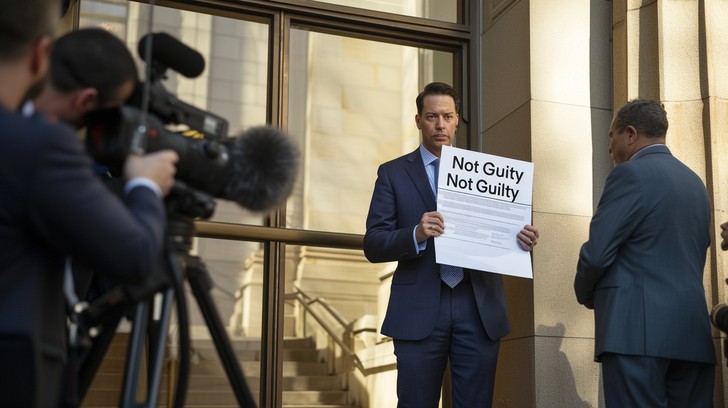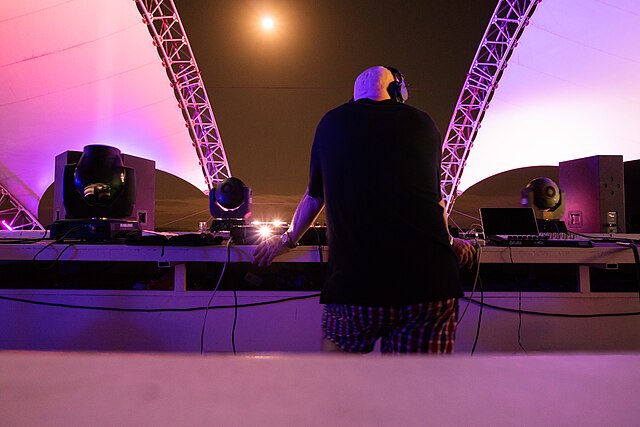Now Reading: Copyright Process in India and Across the Globe
-
01
Copyright Process in India and Across the Globe
Copyright Process in India and Across the Globe
Copyright is a right given by the law to the creators and authors of literary, dramatic, musical and artistic works as well as producers of films and sound recordings. In fact, it is a bundle of rights which includes right to reproduce, communicate to the public, adapt, and translate the work. Copyright ensures certain minimum safeguards of the rights of authors over their creations, thereby protecting and rewarding their creativity and masterpiece. The protection provided by copyright creates an atmosphere conducive to creativity, which induces authors to create more and motivates others to create.
Copyright comes into picture as soon as a work is created and no formality is required to be completed for acquiring copyright. However, facilities prevail for getting the work registered in the Register of Copyrights maintained in the Copyright Office.
In this article, we will try to understand the procedure involved in the copyright registration process not only of India but of countries across the globe.
INDIA
Following are the steps involved in the registration process of copyright:
Step 1: File an Application
In this first step, the copyright claimant, the author of the work, the owner of an exclusive right for the work or an agent who is authorized files an application either in the copyrights office or through speed/registered post or through e-filing facility available on copyright.gov.in.
For registration of each work, a separate application is to be filed with the registrar along with the specifications of the work. The requisite fee according to the type of work must also be paid.
The application fees can be paid through a demand draft or Indian postal order addressed to the Registrar of Copyright Payable at New Delhi. The fees can also be paid through e-payment facility. This application has to be filed with all the essential documents.
At the end of this step, a dairy number will be issued to the applicant by the registrar.
Step 2: Examination
The next step is the examination of the copyright application.
After a dairy number is issued, there is a minimum 30 days waiting period. The copyright examiner reviews the application in this waiting period. Here the process gets divided into two parts:
In case no objections are raised, the examiner goes ahead to review and inspect the application to find any disparity and if there is no fault and all the essential documents and information provided are fulfilled, it is a case of zero discrepancies. In this case, the applicant can move to the next step.
In case some disparities are found, a letter of discrepancy is sent to the applicant. Based upon his reply, the registrar conducts a hearing. The applicant is allowed to move forward to the next step, once the discrepancy is resolved.
In case objections are raised by someone, the letters are sent out to the applicant as well as to the person who has objections and they are called to be heard by the registrar.
If the objection is rejected upon the hearing then the application goes ahead for inspection and the above-mentioned discrepancy procedure is followed.
In case the objection is not sorted or discrepancy is not clarified, the application is rejected and a rejection letter is sent to the applicant. In such case, the copyright registration procedure for the applicant ends here.
Step 3: Registration
Registration can be termed as the final step in this process. In this step, the registrar may ask for more documents. The Registrar of Copyrights enters the details of the copyright into the register of copyrights and issues a certificate of registration when he is completely satisfied with the copyright claim made by the applicant.
The process registration of copyright gets complete when the Extracts of the Register of Copyrights is issued to the applicant.
U.S.A.
To register a copyright, three things are to be submitted to the Copyright Office:
A completed application form. In most instances, an online form or mail of a paper form can be submitted.
A filing fee for online forms or paper forms. Online applications have lower filing fees and faster processing times than paper applications.
Copies of the work you want to register.
In general, one copy of an unpublished work or a work that was first published outside the United States, and two copies of a published work is to be submitted. Before submitting a copyright registration, you should confirm the number of copies you need to deposit and check if there are any special deposit requirements for the type of work you are registering.
Registering a Copyright Online
A copyright can be registered online by logging in to the copyright offices online registration system, filling out the registration form and submitting the requisite payment. In some cases, a copy of the work which is to be registered can be submitted electronically.
Registering a Copyright via Mail
The copyright office has different forms for different types of works such as literary works, visual arts works, performing arts works, sound recordings and single serials. These forms are available on the website of copyright office. A completed form has to be sent in the same package as payment and a copy of the work. Payment has to be made by cheque or money order.
Following Up On Your Registration
If you register your copyright online, an email confirmation stating that your registration was received will be sent. If registration is done via mail, no confirmation will be received when the copyright office receives your registration.
Once the copyright is registered, a certificate of registration will be received in the mail.
DUBAI (U.A.E.)
Copyright can be registered in UAE only after creation of the copyright object in accordance with UAE Federal Law No. (7) of the year 2002 concerning copyrights and neighboring rights.
The two main requirements are:
copyright object should be result of intellectual work and not plagiarism
it should be expressed in any objective form
The copyright object can be registered in UAE by filing a simple form and depositing one sample of the work with the one of below mentioned organizations:
– UAE Ministry of Economy (Copyright Department)
– Dubai Copyright Office (official representation of International Online Copyright Office INTEROCO, European Union)
– U.S. Copyright Office
CHINA
Following steps are to be followed in order to register a copyright in China:
Step 1 set up account on the website of CPCC, http://www.ccopyright.com.cn/cpcc/index.jsp.
Step 2 fill in the application form according to the work you want to register.
Step 3 after filling the application form online, print it out and sign/affix companys seal on the printed copy.
Step 4 hand in or post the registration files and all the documents mentioned in 2c to CPCC
Step 5 the files will be checked by CPCC If everything is in order, then you can proceed to the next step and if the files dont fulfill the requirements then the applicant will be informed to make supplements
Step 6 the relevant registration fees has to be paid and get the Notification of Receipt of the Application
Step 7 the registration will be inspected and approved by CPCC. If the application meets the requirements, then it will be allowed to move to the next step and if it does not meet the requirements then the applicant will be informed to make modifications
Step 8 CPCC will then issue the certificate for approved registrations and make announcement on its website for the knowledge of public.
BANGLADESH
The Act of 200037 and the Copyrights Rules of 2006 lay down the procedure for the registration of a copyright work. In order to get copyright registration, the author, or the owner, or other person interested in the copyright in any work can make an application to the Registrar. The other steps for the registration are as follows:
Application has to be made on Form II in triplicate as mentioned in the First Schedule of the 2000 Act.
Separate application has to be submitted for registration of each work.
Each application is to be accompanied by the prescribed fee prescribed in the Second Schedule of the Rules.
These applications should be signed by the applicant or the advocate in whose favour a Vakalatnama or Power of Attorney has been executed.
The notice has to be served of concerned application to every person who has any interest in the subject matter of that particular application.
If the Registrar receives any objection, he may after holding such inquiry, enter such particulars of work in the Register of Copyrights and issue a certificate to the applicant. If he refuses to enter, the reasons for refusal has to be recorded in writing by him.
CANADA
Registering a copyright involves several steps. You must fill out a standard application form and pay an application fee.
Step 1: Application form
Application forms are available online from the Canadian Intellectual Property Office, from a CIPO Client Service Centre, or from an Innovation, Science and Economic Development Canada office.
Information that is required in the application includes:
1. Title and copyright categories
You must provide a title for your work which must identify a single work.
Next, the application form asks you to choose a copyright category for your work such as literary, musical, artistic and dramatic.
2. Publication
On the application form it must be indicated whether the work has ever been published and provide the date and place of first publication.
3. Owner and author
The full legal name and the complete address of the owner or owners of the copyright, and the author is also required in the application form.
Step 2: Pay fees and submit application
Once the application form has been completed, it must be signed by the owner or someone authorized to act for the owner. The application, together with a non-refundable government fee, has to be submitted to the Copyright Office. Applications can either be filed online or by mail.
Registration by Copyright Office
After the application and registration fee is received by the Copyright Office, they will review it to make sure it is completed properly. If any changes need to be made then you will be informed.
If the application is accepted, a Registration Certificate will be received within five business days if your application was submitted online, or within seven business days if it was submitted by mail. No further fees are required to maintain the registration of the copyright.
Library and Archives Canada Deposit
Lastly, under the Library and Archives of Canada Act and the Legal Deposit of Publications Regulations, the Canadian publishers have to send copies of any new library matter to Library and Archives Canada within one week of the publication.
U.K.
In U.K. you get copyright protection automatically that is to say without any process. You dont have to apply for the registration nor pay a fee. There isnt a register of copyright works maintained in the UK.
One automatically gets a copyright protection when he/she creates original literary, dramatic, musical and artistic work, original non-literary written work, like software, web content and databases, sound and music recordings, recordings of film and television broadcasts, layout of published editions of written, dramatic as well as musical works.
One can mark their work with the copyright symbol (©), name and the year of creation. Whether the work is marked or not, it doesnt affect the level of protection entitled.
SINGAPORE
The modern Copyright Act of Singapore is based on Australian legislation.
For a work to be protected by copyright in Singapore, it has to be original and expressed in a tangible form i.e. in a recording or in writing.
In Singapore, an author or owner of the work automatically enjoys copyright protection as soon as he creates and expresses his work in a tangible form. There is no such need to file for registration in order to get copyright protection.
References
https://copyright.gov.in/Documents/handbook.html
https://copyright.gov.in/Documents/CopyrightRules1958.pdf
https://u.ae/en/information-and-services/business/intellectual-property
https://www.ic.gc.ca/eic/site/cipointernet-internetopic.nsf/eng/h_wr02281.html
https://www.gov.uk/copyright
https://www.ipos.gov.sg/protecting-your-ideas/copyright








